
Make Your Content More Shareable With These 5 Simple Tricks, Backed By Research
Did you know that there are still a few simple hacks left that you can start right now that will make your content more shareable?
Here at CoSchedule (a social media editorial calendar for WordPress) we recently hit a milestone with more than one million headlines in our database. With this massive amount of data, we began wondering what we could learn about the relationship between a headline and its likelihood of being shared via social media.
In short, we began wondering what makes one headline more likely to be shared than another?
We dug through the data, and what we learned really surprised us.
Anyone can learn to write a more shareable headline, but these simple concepts are completely new. They aren’t more of the tired headline jargon of the past. These are the easy-to-implement techniques that you have been looking for when it comes to writing more shareable headlines.
1. Write Headlines That Are Unequivocally Human
After narrowing our data down to a group of headlines that had received more than 1,000 shares, we began categorizing headlines by the topics that they covered. We grouped them into six primary categories (food, home, lifestyle, news, business/tech, other). The results truly surprised us.
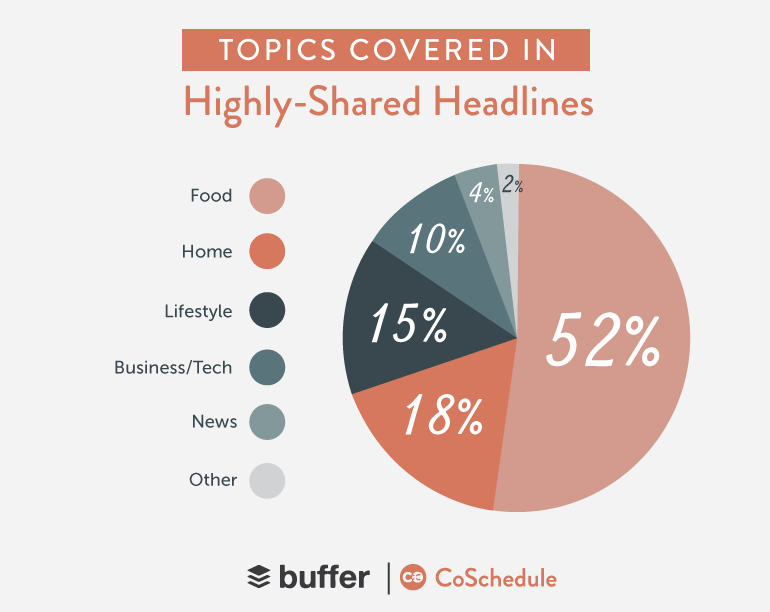
The vast majority of content that is highly-shared, or shared more than 1,000 times, tends to be very ‘human’ by nature. Topics like food, home, and lifestyle clearly accounted for 85% of the world’s most viral content. Topics like business, tech, and news actually accounted for only 14% of this traffic. That’s a pretty incredible difference!
[Click to tweet this: “Food, home, and lifestyle topics account for 85% of the world’s most viral content.”]
The takeaway here is very simple: readers share content that reaches them in a personal and human way. Topics that discuss what we eat or how we live make up a huge portion of what we share online. The challenge for us to begin directing our own headlines in that direction. We need to help our readers imagine a better life!
Another way to look at this is through the strong use of second-person pronouns like ‘you’ and ‘your,’ which clearly stood out in these headlines, accounting for use in nearly 7% of all headlines.
Here are a few examples of how we can make our headlines “more human.”
Existing Headline: Social Media and Business Advice and Tips
More Human Version: Tips For Social Media And Business That Will Keep You From Going Broke
Why It’s Better: The new headline connects a fairly straight-laced topic to a very human fear, going broke.
Existing Headline: How To Stay On Top Of Email
More Human Version: Yes, You Can Stay on Top of E-mail
Why It’s Better: This is actually a real post by blogger Michael Hyatt. He did a great job of adding a personal element that helped his readers attach his post to a current problem that they already understand.
2. Measure The Emotional Value Of Your Headlines
The Advanced Marketing Institute makes available a totally free Headline Analyzer Tool that actually works! This handy little tool promises to tell you how “emotional” your headline is by counting the number of emotional words that are used in the phrase. While analyzing posts with a high-volume of shares, we found that posts with a higher EMV score were actually shared more than those with a lower score.

Posts with a high number of shares frequently reached an EMV Score of 30 or 40, several points higher than posts with fewer shares.
This even held true when comparing the five most shared and the five least shared posts on some of the world’s most popular blogs. The most highly shared posts averaged a score that was higher than those that were shared less.
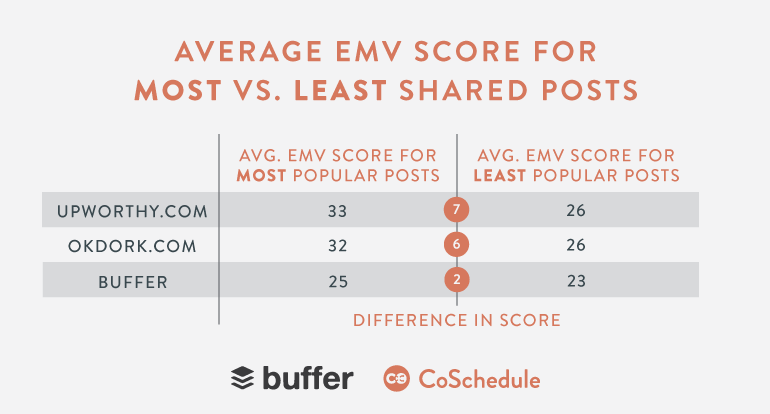
This is pretty cool data because it means that you can use your headline’s EMV score as a sort of “best guess” indicator of possible virality. Even more, you can aim at keeping your headlines at a score of 30 or more to maximize your chances of writing a viral post.
Here are a few examples of improved headlines using the EMV score.
Existing Headline: Tax Tips for the Second Half of the Year (EMV 0%)
Higher EMV Score: Things You Should Do Right Now To Prepare For Tax Season (EMV 45%)
Existing Headline: How to Run Your Business from Your iPad (EMV 12.50%)
Higher EMV Score: How To Be Awesome At Business With Only Your iPad (EMV 40%)
Existing Headline: How To Discover Your Passion (EMV 20%)
Higher EMV Score: How To Find Your Passion Before It’s Too Late (EMV 33%)
3. Understand Why List Posts Work
List posts work. In our results, list posts accounted for nearly 12% of all posts with more than 1,000 or even 100 shares. This was by far the most noticeable type of post.
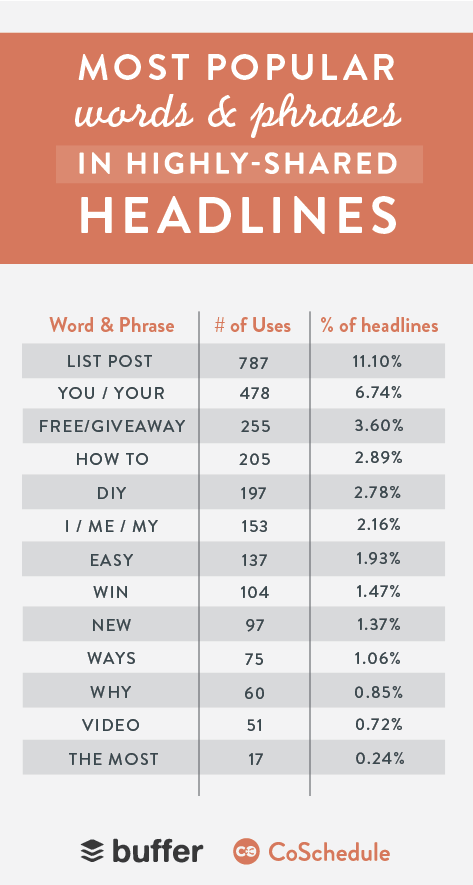
Why do they work so well?
In part, it comes back to the emotional connection readers have with the headline. List posts add an element of intrigue and mystery, while promising quick answers. Because of their skimmable format, we are able to satisfy our curiosity quickly.
One interesting point is that list posts only accounted for 5% of all headlines in our study, which means that bloggers don’t create enough of these kind of posts to begin with. An immediate takeaway here is to start creating more list posts. You might be missing opportunities for big sharing!
Existing Headline: How Customer Service Has Changed Over The Years
As A Sharable List Post: 5 Big Reasons Customer Service Has Totally Changed
Existing Headline: Tools and Websites to Find the Best Topics for Your Blog
As A Sharable List Post: 10 Easy Tools For Finding The Best Topics for Your Blog
Existing Headline: Twitter Marketing – 10 DOs
As A Sharable List Post: 10 Must Do’s For Memorable Twitter Marketing
4. Stop Relying On The Same Headline For Every Network
Each social network has its own quirks and audience personality.
We often measure these quirks by demographic elements like age and gender, but you get a whole new picture when you see the words used in viral posts for each network. Take a look at some of the most common words used in headlines from each network.
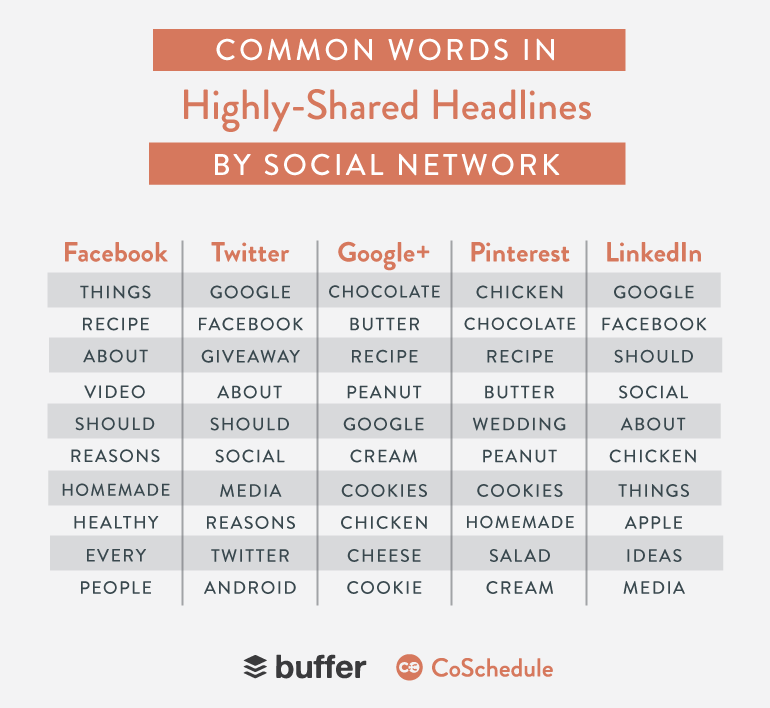
Here we see the true personalities of each network very clearly.
- Facebook and Pinterest tend to be home-oriented. Users share recipes and things for the home.
- Video is more popular on Facebook than other networks.
- Food wins all things on Pinterest.
- Google+ is surprisingly home oriented as well, which I found very surprising.
- Twitter does best for giveaways and the use of the term ‘free’. This is likely because it is one of the only networks that doesn’t “rank” shares like the Facebook news feed.
- Technology related topics do very well on Twitter and LinkedIn, but fall short on others.
- Social media has a near universal love affair with chocolate and chicken. Who knew?
Just for fun, I pulled out a top headline from each network. It paints a pretty clear picture.
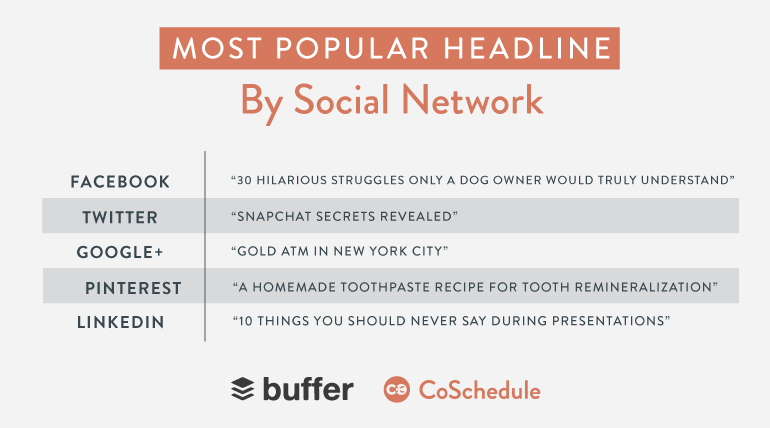
The takeaways here are pretty simple and are something we can implement right away. First, we need to choose our networks wisely. Our content won’t perform equally on each. We should match our content to a target network and plan it out accordingly.
Another thing we should do is begin writing different headlines for each network. The word “giveaway” is a good example of this. We can feel free to use it (and probably should) on Twitter, but it may not play as well on Facebook. This is always a good thing to keep in mind.
A Giveaway On Twitter: Join The Summer iPad Giveaway
A Giveaway On Facebook: Win An iPad For Your Happy Healthy Home!
A Giveaway On Pinterest: Win An iPad For Storing Your Chocolate Chicken Recipes! ?
5. Use The Right Headlines For Steady Traffic
The reality is that most content never receives more than 1,000 shares. In fact, according to our research, it is less than 1%.

You can’t have a viral headline every time.
But many posts (as many as 10%) receive more than 100 shares, and that is the gooey middle that you need to shoot for with most of your content. These posts will probably lead to your most steady traffic over time.
In our headline study, for example, we found that ‘How To’ posts represented a much larger portion of shares in the 100+ shares category than they did in the 1,000+ shares category. The point is that you need to make sure that you use plenty of these types of headlines in your marketing to build your base level of content.
After everything we’ve seen so far, this only makes sense. ‘How to’ posts provide the right amount of emotional fix right when you need it, and can be a great way to build steady traffic.
Existing Headline: Skyrocket Your Blog’s Earnings and Traffic with Pinterest
As A How-To Post: How To Skyrocket Your Blog’s ROI With Pinterest
Existing Headline: 5 Tips to Make Social Media Marketing More Efficient
As A How-To Post: How To Save Time With Social Media Marketing
Existing Headline: Include a Poll on Your Blog for More Directed Content
As A Sharable List Post: How To Include A Poll on Your Blog
Conclusion: Headlines Win
Your headline will make a huge difference in the number of shares that your post receives, but there are several things that we can do to help ‘manufacture’ that traffic. A good way to start might be by analyzing the average EMV Score for some of your most popular posts. You can also build off the headline research already completed here on the Buffer blog.
No matter what you do, it should be comforting to know that you can make a huge impact in the number of shares your post receives just by spending some extra time on the headline.
Image credits: Markus Spiske
Try Buffer for free
140,000+ small businesses like yours use Buffer to build their brand on social media every month
Get started nowRelated Articles

In this article, Nupur Mittal shares insights into four research methods that help her find content ideas and identify unique takeaways.
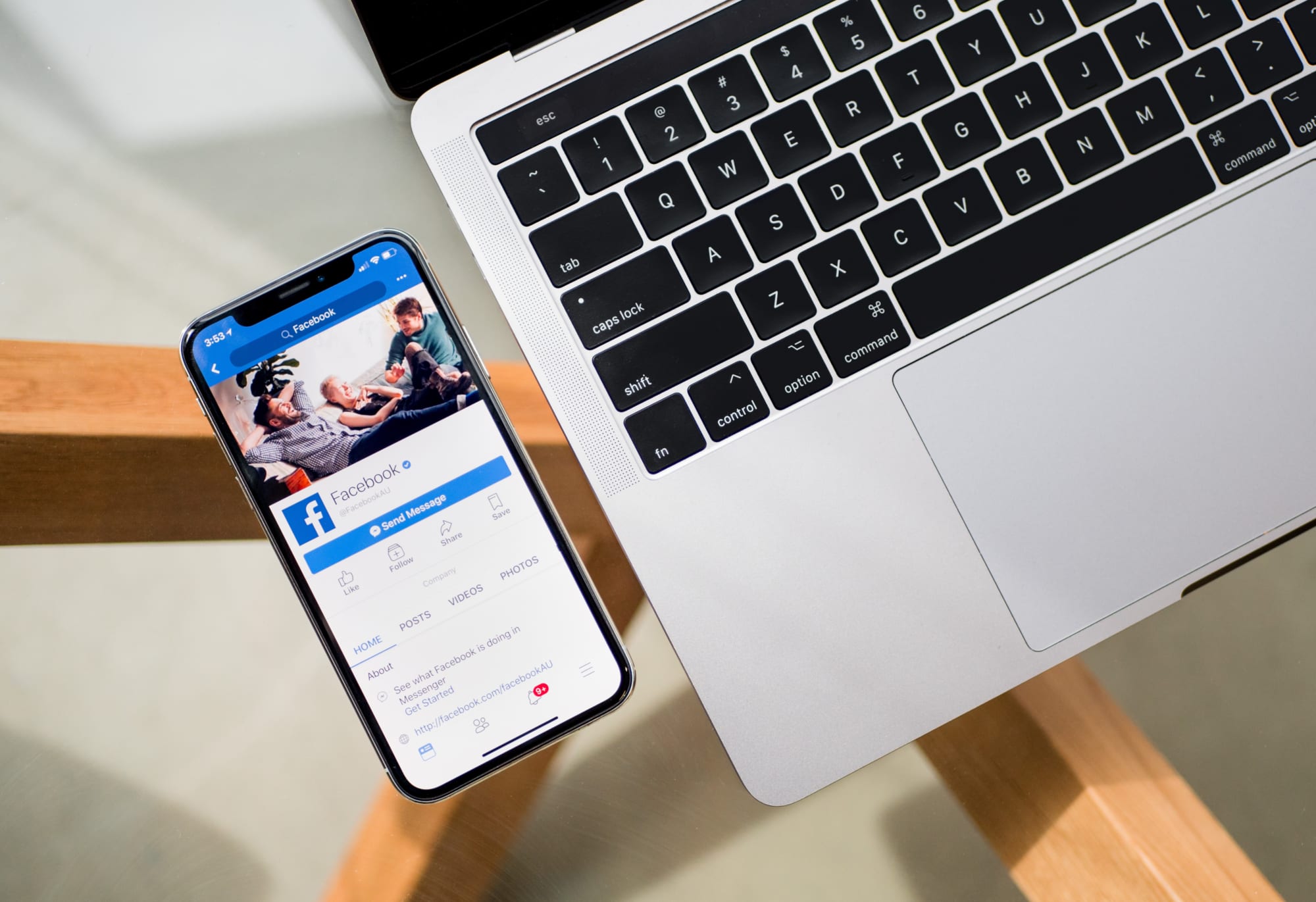
Facebook marketing in 2019 isn’t dead. On the contrary, it’s far from it. Now removed from the dim outlook that businesses faced at the beginning of 2018, Facebook has and will remain an essential tool for brands’ marketing strategies moving forward. In our big State of Social Media 2019 Report, we found that 93.7 percent of businesses use and are currently active on Facebook — the most among any other social media network. And although we continue to see a dramatic rise in the usage
